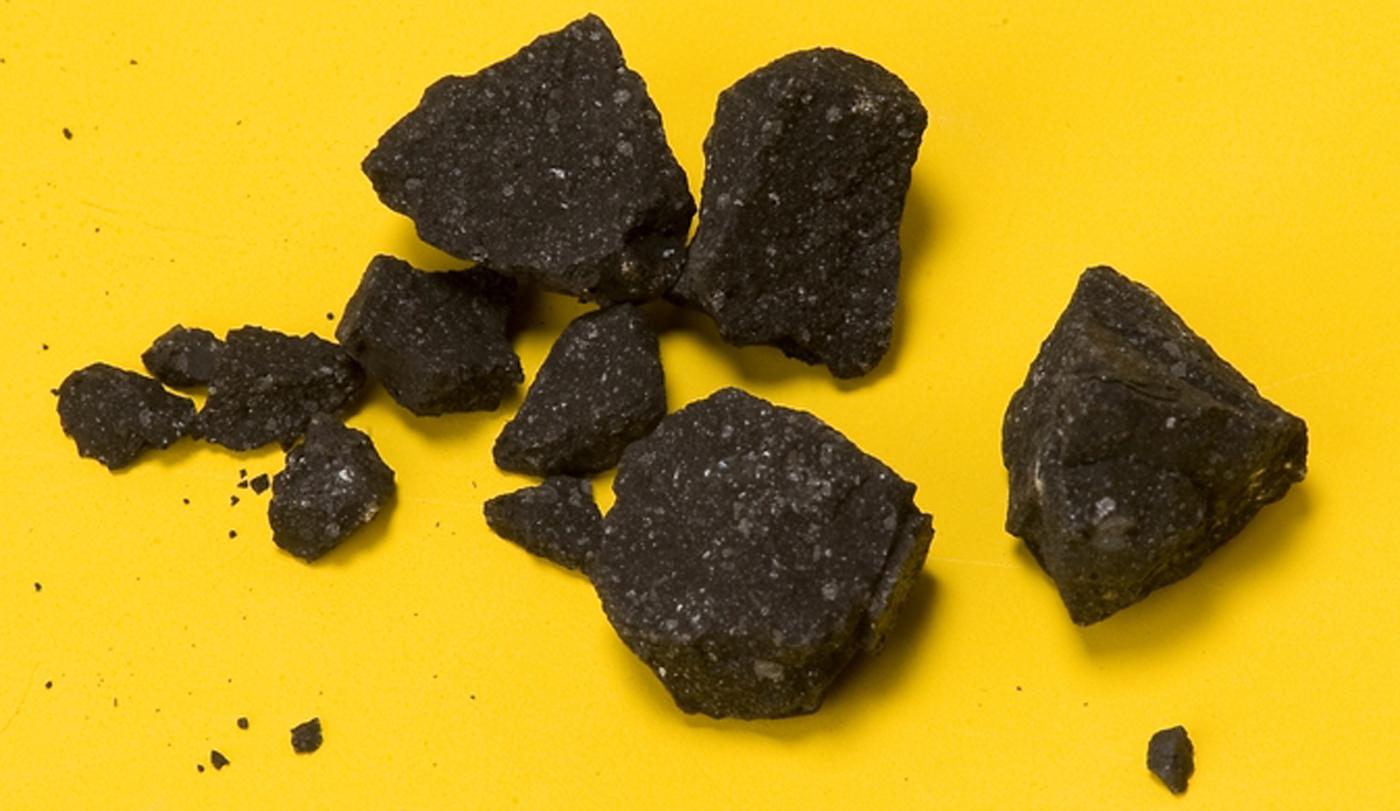Analysis of the Gold Rush Meteorite finds exotic materials.

SETI Institute meteor astronomer Peter Jenniskens found one of the first and one of the most unusual of the Sutter's Mill meteorites that fell on April 22nd, 2012 in California's Gold Country. The pristine sample was collected and rushed to meteorite researchers and laboratories around the world. Now, these scientists report their results in 13 papers in the journal Meteoritics and Planetary Science.
They found that the meteorite contained a host of "xenoliths", chunks of matter that can only have an other-worldly reason for being there. Those included two 10-micron sized diamonds, huge compared to the usual nano-sized diamond star-stuff found in such meteorites. Where did they come from? Perhaps from the interior of a much larger parent body that got smashed, scattering debris all over.
Much of the meteorite appears to have some star-stuff memory. A particularly interesting result of the analysis so far concerns the abundance of various isotopes of chromium within the samples. These suggest that debris from five different stars may have contributed to the material from which our Solar System was formed. Astronomers like to say that “we are star stuff,” and this result suggests that both we and our world contain the detritus of not one, but many stars.
You can read the press release describing their work here:
http://www.nasa.gov/ames/nasa-scientists-find-diamonds-and-other-treasur...





